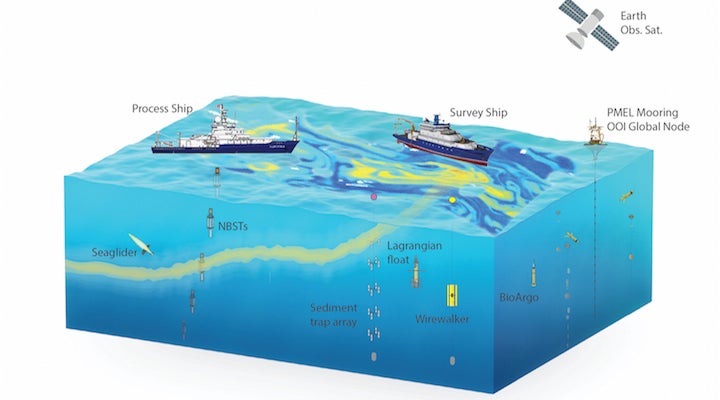Zooplankton grazing in the ocean intimately influences the biomass of phytoplankton, the cycling of organic carbon and nutrients in marine waters and their population sizes and nutritional status. This in turn influences the productivity of their predators, ultimately influencing the abundance of commercially important fish species. It has been challenging to accurately identify rates of zooplankton grazing and connecting those grazing activities to carbon flux, either through the food web or to the deep ocean. We are using a variety of molecular and bioinformatics techniques to address these challenges. Current funding focuses on microzooplankton grazing and comes from NASA as part of the large-scale, multi-investigator EXPORTS project (EXport Processes in the Ocean from RemoTe Sensing). This research has taken the lab to the Bering Sea, the Southern Ocean, the North Pacific and the North Atlantic. In addition to NASA, this part of Rynearson Lab research has been funded by the National Science Foundation and the RI Science and Technology Council. Click here for related publications.

EXPORTS: Expedition Probes Ocean’s Smallest Organisms for Climate Answers
Satellite images of phytoplankton blooms on the surface of the ocean often dazzle with their diverse colors, shades and shapes. But phytoplankton are more than just nature’s watercolors: They play a key role in Earth’s climate by removing heat-trapping carbon dioxide from the atmosphere through photosynthesis. Yet a detailed account of what becomes of that carbon — how much of it goes where within the Earth and for how long — has beset scientists for decades. So while NASA’s Earth-observing satellites can detect the proliferation and location of these organisms, the precise implications of their life and death cycles on the climate are still unknown. To answer those questions, a large multidisciplinary team of scientists sailed on Aug 10th, 2018 to a point 200 miles west from Seattle into the northeastern Pacific Ocean with advanced underwater robotics and other instruments on a month-long campaign to investigate the secret lives of these plantlike organisms and the animals that eat them.
More info on EXPORTS here.
Click here to check out the EXPORTS expedition blog as well as three blog posts written by Rynearson Lab graduate student, Diana Fontaine, who participated on the research cruise.
